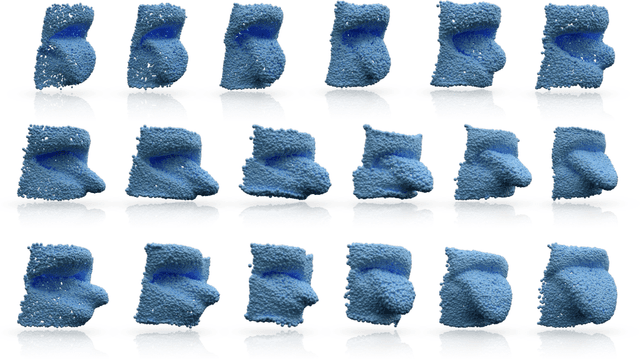Vasileios Triantafyllou
3D human tongue reconstruction from single "in-the-wild" images
Jun 23, 2021



Abstract:3D face reconstruction from a single image is a task that has garnered increased interest in the Computer Vision community, especially due to its broad use in a number of applications such as realistic 3D avatar creation, pose invariant face recognition and face hallucination. Since the introduction of the 3D Morphable Model in the late 90's, we witnessed an explosion of research aiming at particularly tackling this task. Nevertheless, despite the increasing level of detail in the 3D face reconstructions from single images mainly attributed to deep learning advances, finer and highly deformable components of the face such as the tongue are still absent from all 3D face models in the literature, although being very important for the realness of the 3D avatar representations. In this work we present the first, to the best of our knowledge, end-to-end trainable pipeline that accurately reconstructs the 3D face together with the tongue. Moreover, we make this pipeline robust in "in-the-wild" images by introducing a novel GAN method tailored for 3D tongue surface generation. Finally, we make publicly available to the community the first diverse tongue dataset, consisting of 1,800 raw scans of 700 individuals varying in gender, age, and ethnicity backgrounds. As we demonstrate in an extensive series of quantitative as well as qualitative experiments, our model proves to be robust and realistically captures the 3D tongue structure, even in adverse "in-the-wild" conditions.
AvatarMe: Realistically Renderable 3D Facial Reconstruction "in-the-wild"
Mar 30, 2020



Abstract:Over the last years, with the advent of Generative Adversarial Networks (GANs), many face analysis tasks have accomplished astounding performance, with applications including, but not limited to, face generation and 3D face reconstruction from a single "in-the-wild" image. Nevertheless, to the best of our knowledge, there is no method which can produce high-resolution photorealistic 3D faces from "in-the-wild" images and this can be attributed to the: (a) scarcity of available data for training, and (b) lack of robust methodologies that can successfully be applied on very high-resolution data. In this paper, we introduce AvatarMe, the first method that is able to reconstruct photorealistic 3D faces from a single "in-the-wild" image with an increasing level of detail. To achieve this, we capture a large dataset of facial shape and reflectance and build on a state-of-the-art 3D texture and shape reconstruction method and successively refine its results, while generating the per-pixel diffuse and specular components that are required for realistic rendering. As we demonstrate in a series of qualitative and quantitative experiments, AvatarMe outperforms the existing arts by a significant margin and reconstructs authentic, 4K by 6K-resolution 3D faces from a single low-resolution image that, for the first time, bridges the uncanny valley.
 Add to Chrome
Add to Chrome Add to Firefox
Add to Firefox Add to Edge
Add to Edge